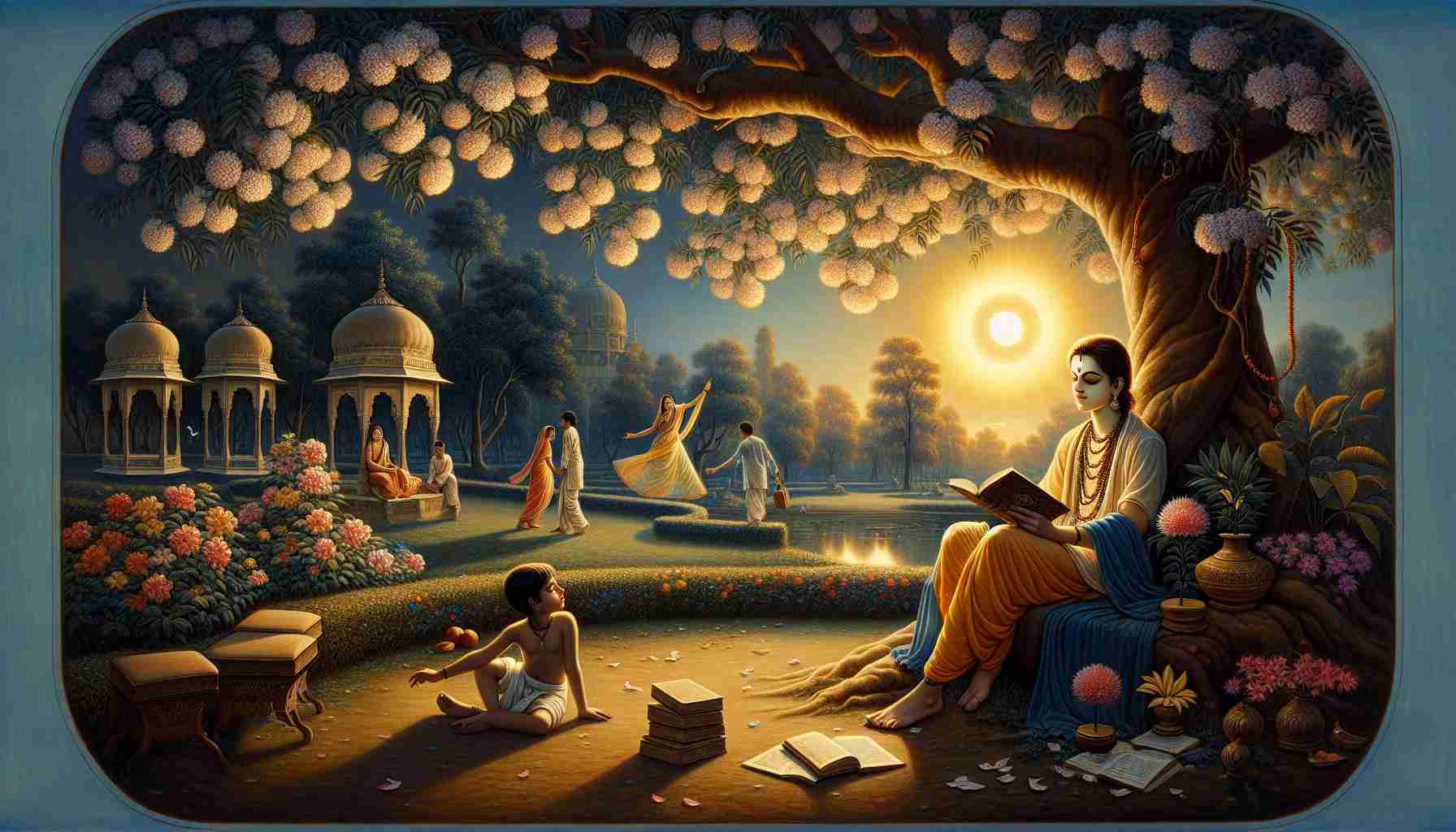

I was twenty-three when I fell in love for the first time—or so I thought.
Her name was Meera. She joined our research team at the museum in Delhi, and from the moment I saw her adjusting her dupatta near the ancient Sarasvati sculpture, I was smitten. I memorized the way she tucked her hair behind her ear. I made excuses to discuss work I hardly understood.
I told myself it was love. I prayed that she'd notice me.
One evening, after another day of pretending not to care, I walked home through Lodhi Gardens. The gulmohar trees were blooming bright orange against the deepening sky. Couples passed by, laughing. I felt a familiar ache—the kind that whispered I was missing something. Again.
I sat on a bench under a neem tree and opened the Gita I carried in my bag—more out of habit than discipline. My mother had gifted it to me when I moved away for college. “Krishna is within,” she had said, placing a diya at our home altar. “Start there.”
It opened to Chapter 6, verse 30:
“He who sees Me in everything and sees everything in Me, never loses sight of Me, nor do I ever lose sight of him.”
I paused.
For months, I'd been chasing the idea of being loved back—as if that alone would make me whole. But here was Krishna, our divine guide and friend, saying that connection begins with seeing Him, within everyone, including ourselves.
Was I even truly seeing Meera?
Or was I only seeing what I wanted from her—validation, comfort, some sense of being enough?
I looked up. A child was trying to climb a stone wall nearby. He fell, then laughed. His mother scooped him up and kissed his forehead with no hesitation, no condition. Her love wasn’t earned—it simply was.
I remembered something from the Upanishads we read in school. “You are that”—Tat Tvam Asi.
The Divine lives in all of us.
Love isn’t about filling holes inside us. Love flows from the soul when we see the same spirit in others, without need, without fear.
That night, I didn’t dream of Meera’s eyes or hands.
I dreamt of the child laughing.
I started changing in small ways. I still spoke with Meera, but no longer anxiously. I listened more, smiled without planning it. I started greeting the museum’s cleaner with folded hands—pranams, not politeness.
I still felt lonely some days. But less so.
In the Ramayana, when Hanuman bows to Rama, he says, “In body I am your servant. In soul, I am part of You.”
That’s what I wanted.
Not love that clings, but love that remembers we were never separate to begin with.
And slowly, through silence and scripture and strangers who smiled back—I started to feel it.
That I was already held.
Already seen.
I was twenty-three when I fell in love for the first time—or so I thought.
Her name was Meera. She joined our research team at the museum in Delhi, and from the moment I saw her adjusting her dupatta near the ancient Sarasvati sculpture, I was smitten. I memorized the way she tucked her hair behind her ear. I made excuses to discuss work I hardly understood.
I told myself it was love. I prayed that she'd notice me.
One evening, after another day of pretending not to care, I walked home through Lodhi Gardens. The gulmohar trees were blooming bright orange against the deepening sky. Couples passed by, laughing. I felt a familiar ache—the kind that whispered I was missing something. Again.
I sat on a bench under a neem tree and opened the Gita I carried in my bag—more out of habit than discipline. My mother had gifted it to me when I moved away for college. “Krishna is within,” she had said, placing a diya at our home altar. “Start there.”
It opened to Chapter 6, verse 30:
“He who sees Me in everything and sees everything in Me, never loses sight of Me, nor do I ever lose sight of him.”
I paused.
For months, I'd been chasing the idea of being loved back—as if that alone would make me whole. But here was Krishna, our divine guide and friend, saying that connection begins with seeing Him, within everyone, including ourselves.
Was I even truly seeing Meera?
Or was I only seeing what I wanted from her—validation, comfort, some sense of being enough?
I looked up. A child was trying to climb a stone wall nearby. He fell, then laughed. His mother scooped him up and kissed his forehead with no hesitation, no condition. Her love wasn’t earned—it simply was.
I remembered something from the Upanishads we read in school. “You are that”—Tat Tvam Asi.
The Divine lives in all of us.
Love isn’t about filling holes inside us. Love flows from the soul when we see the same spirit in others, without need, without fear.
That night, I didn’t dream of Meera’s eyes or hands.
I dreamt of the child laughing.
I started changing in small ways. I still spoke with Meera, but no longer anxiously. I listened more, smiled without planning it. I started greeting the museum’s cleaner with folded hands—pranams, not politeness.
I still felt lonely some days. But less so.
In the Ramayana, when Hanuman bows to Rama, he says, “In body I am your servant. In soul, I am part of You.”
That’s what I wanted.
Not love that clings, but love that remembers we were never separate to begin with.
And slowly, through silence and scripture and strangers who smiled back—I started to feel it.
That I was already held.
Already seen.